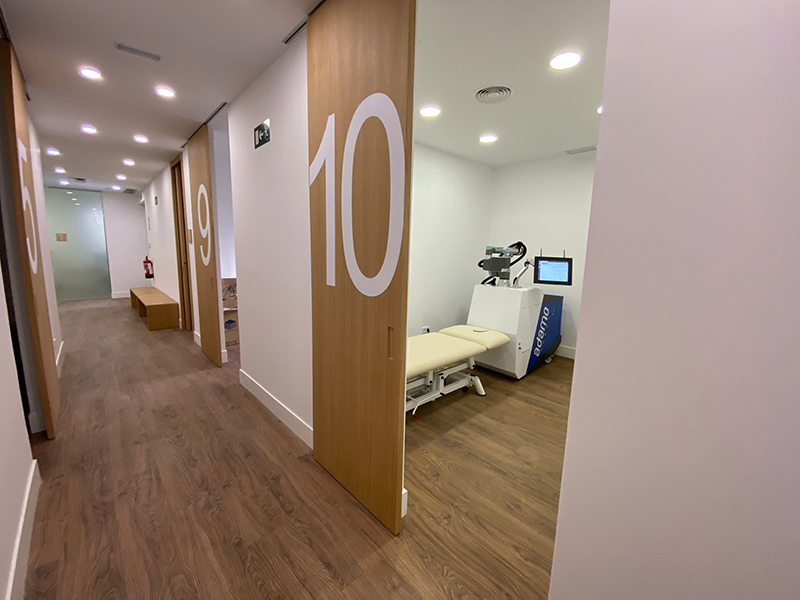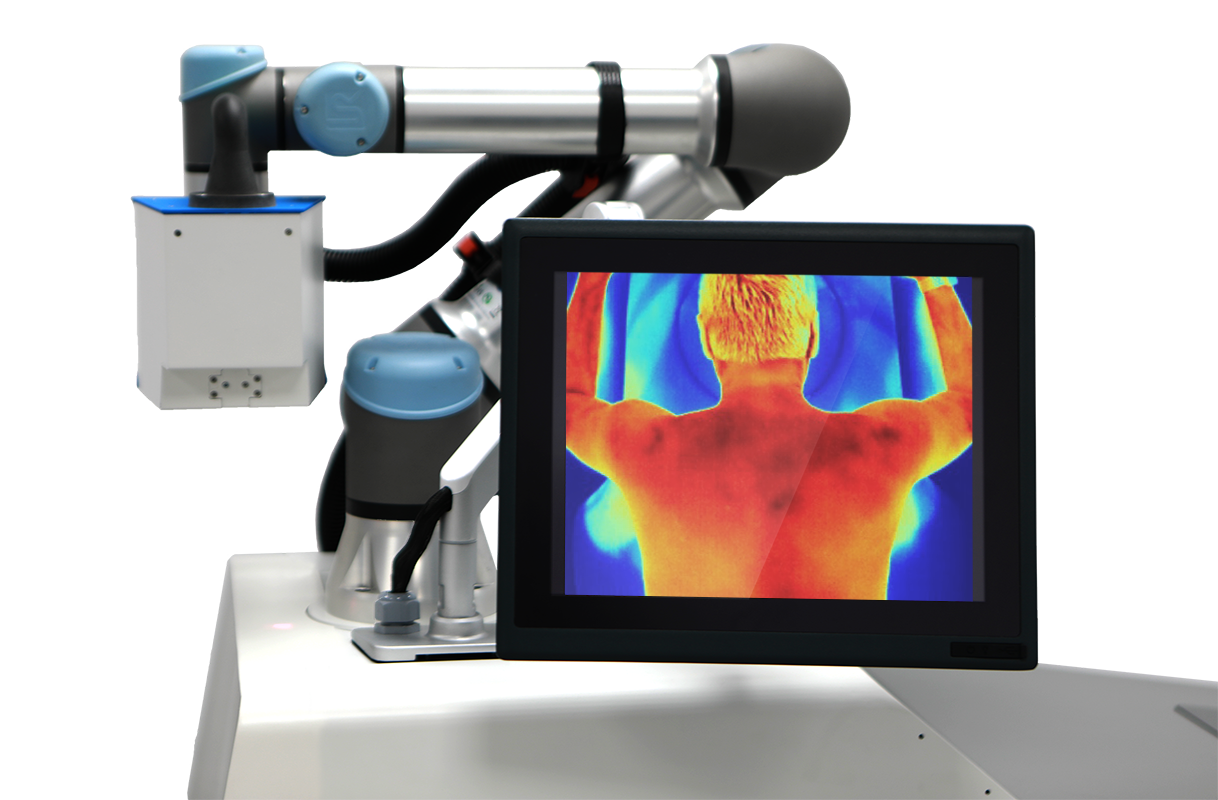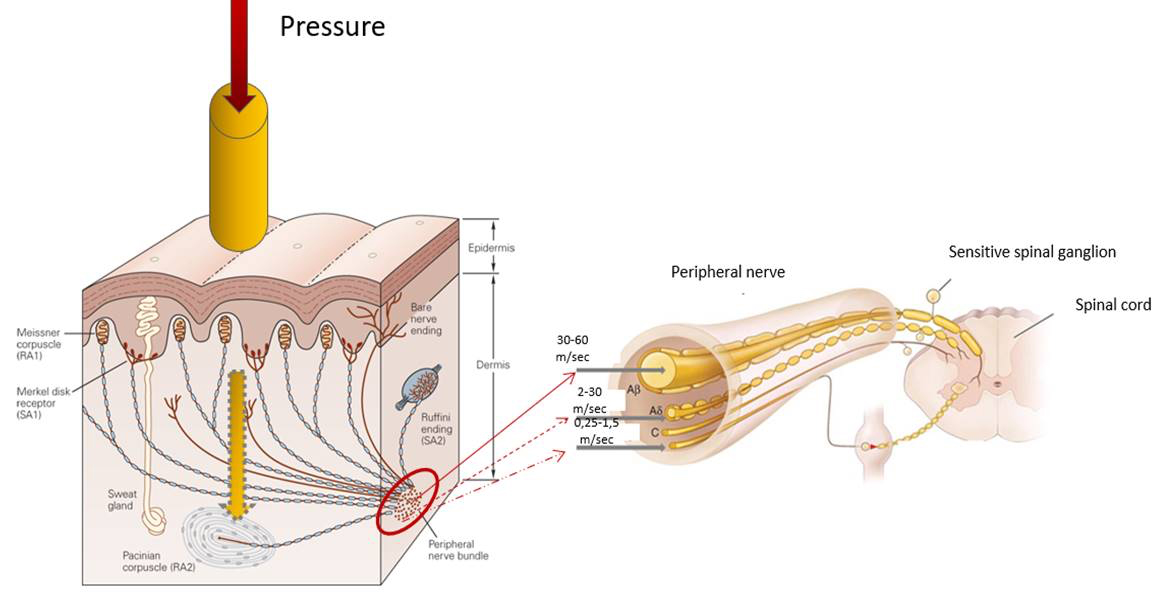Musculoskeletal disorders (MSDs) are leading cause of disability worldwide, with prevalence of 1.3 billion, and responsible for 136 million of years lived with disability in 2017. Even though the incidence of MSDs increases with age, adolescents and people in working age group are also highly affected, leading to increased morbidity and even early retirement from work. Moreover, 60% of work-related health problems are caused by MSDs. These create a burden for the healthcare system with an estimated cost of €196 billion a year.
The most prevalent
MSDs are: low back pain cervicalgia sprains tendinitis
Innovative technology
Adamo Robot is a collaborative robot, 100% safe, capable of treating musculoskeletal disorders applying a jet of pressurized air with a correct temperature and without the need for direct contact with the patient. The continuous pressure applied by the air jet imitates manual therapy techniques used by physical therapists for connective tissue, such as myofascial trigger point treatment, while also increasing the subdermal blood flow and oxygenation of the area.


“Massage performed by the ADAMO Robot (…) is at least as efficient as the manual massage therapy, while demonstrating more efficiency in the treatment of specific patients, such as those with excessive weight.”
Marín-Méndez Honorio - 2021
Adamo Robot is equipped with FLIR thermal cameras capable of accurately measuring the skins temperature. By measuring the thermal asymmetry of the patient’s body, Adamo Robot provides insights on their condition to aid the therapist in reaching the correct diagnosis so Adamo Robot can apply the most effective treatment. In addition, Adamo Robot can use the images taken before each session and compare them with each other to effectively measure the evolution of the patient’s condition and the progress towards total recovery.
Thermography imaging for a better understanding of the patients’ condition*
Adamo Robot is equipped with FLIR thermal cameras capable of accurately measuring the skins temperature. By measuring the thermal asymmetry of the patient’s body, Adamo Robot provides insights on their condition to aid the therapist in reaching the correct diagnosis so Adamo Robot can apply the most effective treatment. In addition, Adamo Robot can use the images taken before each session and compare them with each other to effectively measure the evolution of the patient’s condition and the progress towards total recovery.
*The thermography applied in Adamo Robot has not a diagnosis purpose, but it is a supporting tool for treatment.

Why are Adamo Robot treatments completely painless?
The sensory receptors are located in the deep layers of the skin and are mainly the Pacini corpuscles (which respond to vibratory stimuli and mechanical pressure) and the Ruffini corpuscles (responsible for receiving temperature changes and recording the stretching). Both are connected to thick Aß-type nerve fibers, which are the ones with the highest conduction speed (Zimmerman et al., 2014). The fibers that transmit nociceptive stimuli (fibers Aδ and C, also known as pain fibers) have a lower conduction speed.
These nerve fibers mostly do not join at the dorsal gray horn but continue through the back of the spinal cord to reach higher nerve centers. But these paths that convey information from mechanoreceptors, emit a lateral root in the dorsal grey horn where the synapse with spinal interneurons takes place. These interneurons can contact second order neurons which are responsible for transmitting nociceptive information.

Due to the different transport speeds between the pain-conducting fibers (C-fibers and Aδ) and the pressure-conducting fibers (Aß), the activation of the spinal interneurons can be caused and the transmission of nociceptive stimuli to the higher nerve centers can be blocked (Zimmerman et al., 2014).
The control gate theory is based on the same principle, blocking pain by pressing on the surface and controlling the neurological mechanism (Guo & Hu, 2014).
In addition, the pressure generated by compressed air at the skin level can cause a blockage in the release of allogeneic substances (substance P, bradykinin, histamine) (Schmelz, 2011) and prevent the activation of various ion channels in the nociceptive fibers that generate pain (Caterina & Pang, 2016)